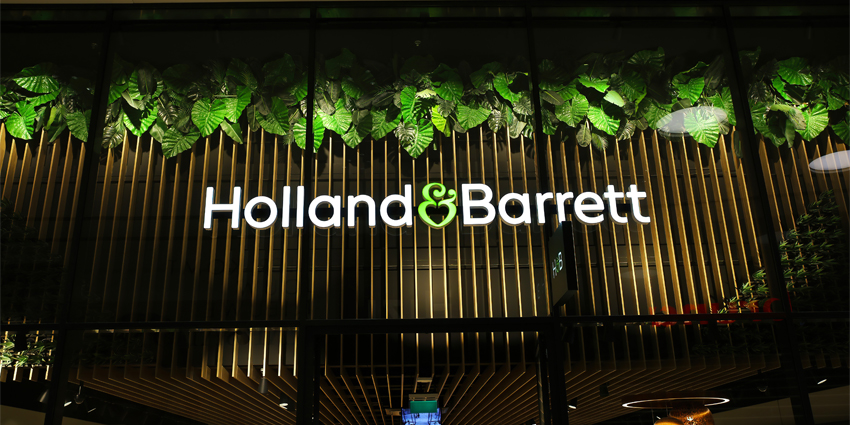The latest UK Customer Satisfaction Index report has revealed that customer satisfaction levels have hit their lowest point in six years.
The research quizzed UK customers on how they rate organizations across 13 sectors and five customer satisfaction signifiers, with numbers having fallen year-on-year in every category.
As the Director of CX and Insight at Holland & Barrett, as well as having recently been appointed to the board of the Market Research Society (MRS), Georgie White can provide both a CX and insights perspective on the issue.
In the discussion with CX Today, White explains how the number of customer service tech innovations that have become available in recent times have contributed to a rise in customer expectations, which businesses have struggled to keep pace with.
Where companies have managed to maintain better customer satisfaction levels in certain sectors, White believes it is down to organizations “having to compete on customer experience,” with the level of competition forcing them to improve their offerings.
The demand and the desire are so much that they are absolutely having to put the customer at the heart of everything they do, and make sure that they are delivering. It is an incredibly competitive world.
White also discusses where companies are going wrong and what they are getting right with AI implementation in the CX sector. She outlines the infancy of the tech, and champions the need for it to be seamless to the point that it goes unnoticed by the customer.
However, she also raises concerns about diversity in AI – highlighting how the tech underrepresents women and certain ethnicities.
Another issue discussed is the danger of CX decision-makers unintentionally using their own biases during the market research process. White champions the need not just to listen to your customers but to actually incorporate that information into your CX program.
One of Holland & Barrett’s biggest recent CX successes has been its ‘Every Menopause Matters’ campaign. White details how the idea came about, how the campaign was implemented, and how it has resonated with customers.
It’s worked really well for us. We saw fantastic levels of engagement both internally and externally – enabling us to marry the employee experience and the customer experience.
You can read Georgie’s full thoughts on all of the above and much more below:
Why Are UK Customers Unsatisfied?
CX Today
UK customer satisfaction is at its lowest level in over six years, but in the breakdown of the data, the non-grocery retail sector – which is where Holland and Barrett would fall – was the best performing. So, the question has two parts: why do you think customer satisfaction is falling? And why do you think non-grocery retail is managing to outperform the other sectors?
Georgie White
These days, customers have got a number of choices and a number of options as to where they put their hard-earned incomes, so that’s raising their expectations.
Also, there are a number of innovations that are driving lots of different sectors, and these are really fueling expectations into other sectors.
Interestingly, while there’s been this increase in customer expectation, at the same time, businesses obviously need to be much more efficient.
There’s also been various kinds of cost challenges, which has made it really important part for insight teams, organizations, etc to ensure they are marrying those two data points. And what often happens is they have separate conversations, whereas they should be brought together.
The second part of your question on why non-grocery is pulling apart, I think there’s a few different dynamics happening there.
But effectively, organizations are having to compete on customer experience. The demand and the desire is so much there that they are absolutely having to put the customer at the heart of everything they do, and make sure that they are delivering. It is an incredibly competitive world.
And the biggest non-grocer in the world, Amazon, very much sets the expectations from a customer perspective.
Does AI = Better Customer Satisfaction?
CX Today
The UKCSI report also highlighted a correlation between AI and higher levels of customer satisfaction. How do you feel about the proliferation of AI in the CX and customer service sector in recent times? And how do you think it is best utilized?
Georgie White
Without a doubt, there’s a huge proliferation and there’s even more that’s going to be coming.
You know, we’re all still figuring out what it means, how we use it, how we deploy it, and how it really benefits both organization and customer – and where it doesn’t as well, quite frankly.
When it’s at its best is often when the customer actually doesn’t realize or doesn’t notice, which I think is a really interesting dynamic.
I think there are two aspects to when it’s at its worst. One is when customers really notice and they get really frustrated. Everyone will have examples of where they know they’re dealing with a chatbot and they’re getting more and more irritated as they type away. Whereas when it goes from chatbots to human in a very seamless, integrated way is when it’s at its best.
The other time when it’s at its worst is actually due to some of the bias that exists.
That’s a hugely important one, both from a customer experience perspective but also from an insight perspective, because AI doesn’t know what it doesn’t know. And as users, we don’t know what we don’t know.
AI massively underrepresents women, and it underrepresents certain ethnicities.
So, in certain sectors it is a real issue, and as practitioners of CX, we need to really ensure that we are cognizant and tackling that bias.
It’s not to say AI can’t still help, but otherwise we can compound the problem much further.
So, from a CX perspective, it could mean that you are excluding certain parts of society in the customer experience tools and solutions you are developing – and that is a real issue.
Making the Most of Market Research
CX Today
I’ve heard you talk in the past about the importance of talking to your customers to truly understand what they want. Could you expand on that? Are there any tips or strategies that you use to bring about those insightful conversations with customers?
Georgie White
When it comes to customer experience, as decision makers we need to ensure that we’re putting the perspectives of others into our CX programs.
It’s very easy to use our own biases, but very rarely do decision makers actually reflect the customer that they’re targeting.
And say from an insight perspective, there are three areas that are really, really important.
First is that you are ensuring you are representing the voice – representing your target customer.
Secondly, that you’re taking that insight, and you are translating it to what is most important to the business.
So, if it’s the revenue, if it’s reducing costs, if it’s the uplift, if it’s managing regulation – whatever it is, you take what you’re learning, and you put it in a way that your stakeholders can really engage with.
And then the third is making sure that you represent your customer fully. And what I really mean by that is at the moment, about 20% of the UK population – and it’s even bigger if you go across different markets – is excluded from most market research.
So, if we’re not giving them a voice, then nobody is.
Lessons From H&B’s ‘Every Menopause Matters’ Campaign
CX Today
I wanted to ask you about the success of your ‘Every Menopause Matters’ campaign. How did the campaign come about and how has it resonated with your customers so far?
Georgie White
The campaign came about really from identifying a few key insights around what customers going through the menopause were really looking for there.
And one of the issues we identified was the fact that not only is it still considered to be, but actually for certain parts of society, the menopause is even more of an issue, and they have nowhere to go.
So, based on the insight and the data, that led us to really understanding the problem and working with our marketing agencies to identify a way of unlocking this issue.
It was about supporting them in realizing that they had somewhere they could go. That could be online, or it could also be into stores with our specifically trained colleagues who are there to support.
So, taking and trying to take some of the taboo out of it and recognizing that the solutions didn’t necessarily exist for everybody. So, very much a customer-centric insight driven campaign.
It’s worked really well for us. We saw fantastic levels of engagement both internally and externally – enabling us to marry the employee experience and the customer experience.







